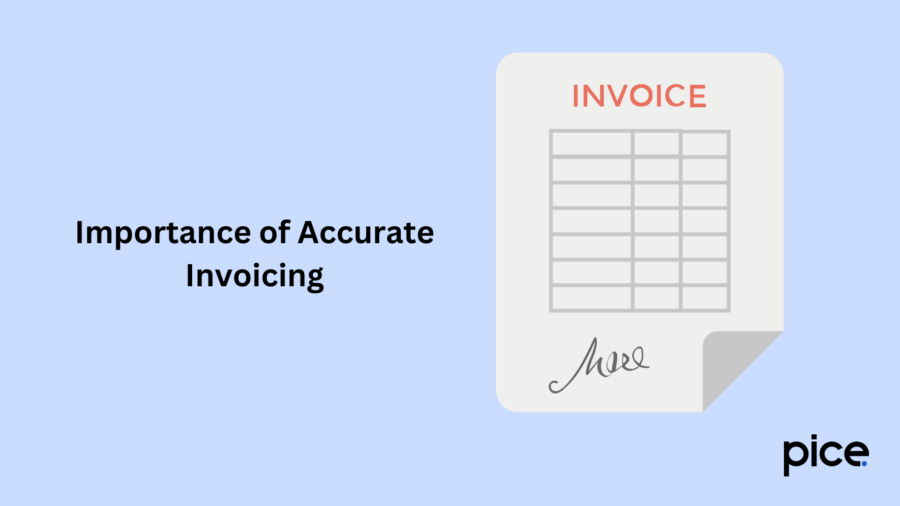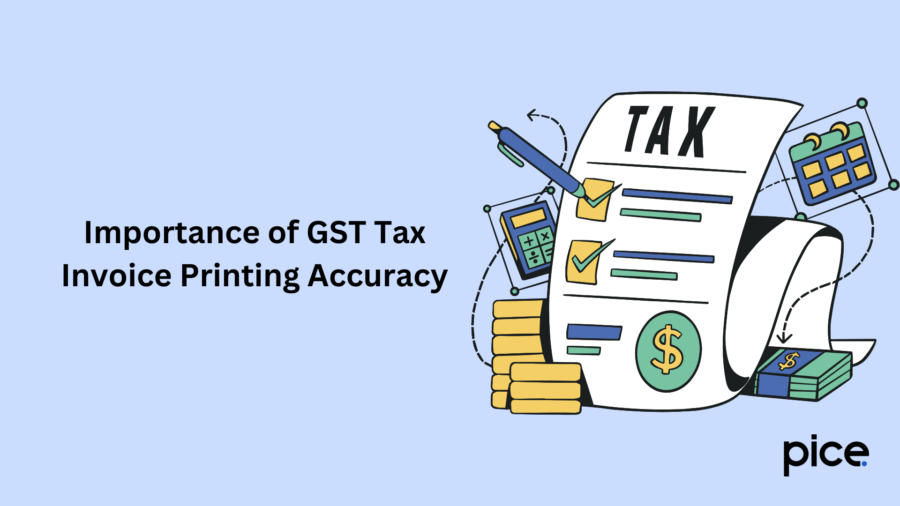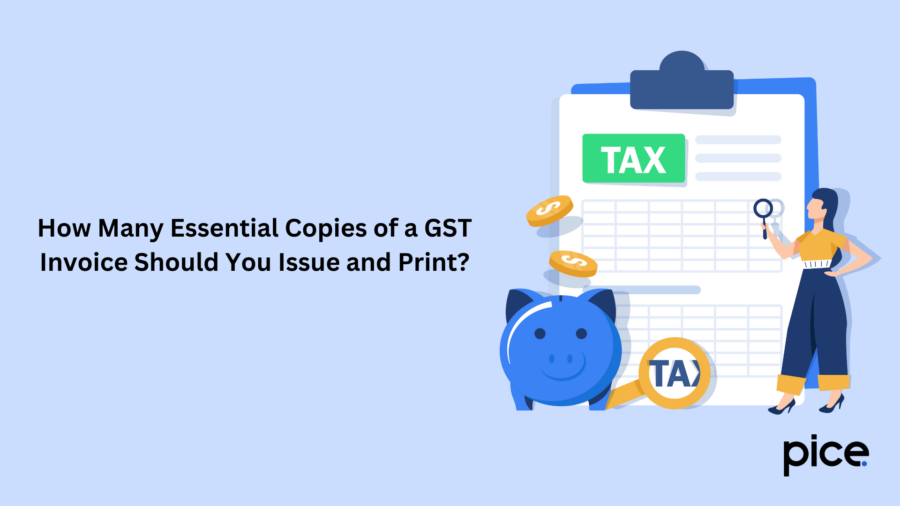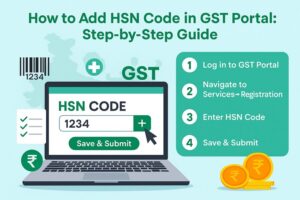Handwritten GST Invoice
- 13 Dec 24
- 11 mins

Handwritten GST Invoice
- Importance of Accurate Invoicing
- How to Avoid Errors in Tax Invoice Printing?
- Importance of GST Tax Invoice Printing Accuracy
- Tax Invoice Printing Accuracy Checklist
- Tax Invoice Printing Accuracy Best Practices
- Mandatory Components of a GST Invoice
- How Many Essential Copies of a GST Invoice Should You Issue and Print?
- When Should You Issue and Print a GST Invoice?
- Conclusion
Key Takeaways
- Accurate GST invoicing ensures compliance and timely payments.
- Automated tools minimize errors in invoice generation.
- E-invoicing mandates IRN and QR codes for businesses over ₹5 crore turnover.
- Include mandatory details to validate GST invoices and enhance customer satisfaction.
- Print multiple invoice copies for seamless transport, record-keeping, and tax compliance.
Suppliers mandatorily need to issue a GST invoice to their customers to collect payment for the supply of services and goods. As a supplier, you can either use an automated invoice template or a handwritten GST invoice to detail the transactions for the supply of services and goods.
Learn elaborately about accurate tax invoice printing to enhance brand reputation and image among customers.
Importance of Accurate Invoicing

Accurate invoicing and timely submission of invoices are crucial for GST-compliant business operations and business owners. An incorrect invoice will likely result in delayed payment receipts from the buyer for goods and services sold by the supplier. Moreover, if there are errors with respect to tax, the supplier has to face an increased tax liability, which affects the cash flow of his/her business.
Erroneous invoices adversely affect business reputation and brand credibility. Customer dissatisfaction is one of the consequences of an erroneous invoice. In addition, tax authorities might suspect your business to be a fraud. It will further trigger audits leading to pressure on the financial department of your business.
Accurate invoices can help businesses receive timely payment from their customers who can in turn claim input tax credit (ITC). This fosters a long-term relationship between businesses and customers.
How to Avoid Errors in Tax Invoice Printing?
Businesses need to print multiple copies of GST-compliant invoices for transporters and customers. Export businesses further need copies of export invoices for customs clearance. Here are the various types of mistakes that you need to avoid while printing a business invoice:
- Not Printing Essential Invoices
As per GST regulations, you need to issue an invoice within 30 days from the time of supply or the time of removal of goods from your warehouse. You can affix invoices while supplying high-value goods or large volumes of goods to ensure all goods are supplied appropriately. Print invoices for attaching them to goods while you supply them to avoid mismatches in accounts.
- Confusing Invoices
Supplying and delivering multiple goods to the same customer requires different invoices with varied details in the B2B landscape. While you might understand the invoice details, customers might be confused in understanding the invoice perfectly if you do not follow a standard invoice format or template. As a result, following a specific format or template is essential while issuing and printing invoices.
- Missing Data
GST invoices include mandatory fields which you need to fill in to make it a valid invoice. Incorrect or missing details on the invoice make it invalid. Instead of printing your invoice and then filling in the details manually, consider filling in the details before you take a print of the invoice. This helps you avoid missing important details of the invoice.
- Computation Mistakes
Computational mistakes are common in invoices if you do not have a standardised pricing system. Mistakes in calculation can arise if you enter an erroneous GST rate. This results in increased tax liabilities and payments affecting your business significantly. Using an automated invoice can help you avoid computational mistakes.
- Incorrect or Missing Invoice Details
Wrong details or missing details on a GST invoice make an invoice invalid. Further, it creates difficulties for customers in claiming ITC to offset the GST liabilities. To avoid such cascading errors, ensure you enter correct and accurate details in invoices.
Importance of GST Tax Invoice Printing Accuracy

Under the GST Act, GST-registered taxpayers need to issue and print accurate invoices and bills for GST compliance. It ensures timely delivery of goods in transit. Road authorities often seize and hold goods if there are errors in the invoice and e-way bill. To avoid such instances, you need to print accurate GST invoices. Here are the reasons to print accurate invoices:
- Ensure GST Compliance
Accurate GST bills and invoices ensure GST compliance and hassle-free uploading of invoices on the GST portal. It allows you to pay exact taxes based on up-to-date GST reports.
- Improve Cash Flow
A correct invoice issued by suppliers can help avoid a mismatch with purchase orders. It reduces efforts while enabling customers to pay the correct amount at the right time. Suppliers can improve their cash flow for the business with accurate invoices and receipt of timely payments.
- Enhance Brand Image and Reputation
When you print standardised invoice templates, you can seamlessly improve your brand image and reputation among customers. Following a prescribed schema helps improve recognition of your brand, enabling you to avoid missing mandatory details.
- Simplify Audits
If you maintain a standardised invoice format, you can simplify audit processes with digital viewing and printing of the invoice. It allows tax authorities to check essential details on the printed invoice for GST compliance.
Tax Invoice Printing Accuracy Checklist
Businesses can use accounting software to generate a GST tax invoice. However, if the annual turnover of your business is more than ₹5 crore, you need to generate an e-invoice adhering to the e-invoice mandate requirements. In such a scenario, an e-invoice is considered the only valid tax invoice.
You can use the e-invoicing IRP portal to generate an e-invoice. Once you upload your invoice on this portal, it generates an IRN. Based on verification and validation, the system generates a QR code for your invoice.
You need to print the e-invoice followed by the QR code for compliance with GST rules. Here is the checklist to print tax invoices accurately:
- Check if your business aligns with the e-invoice mandate
- Use an accounting tool to generate tax invoices
- Log in to the official e-invoicing portal
- Upload your invoice details in the IRP system
- Use the IRP system to generate IRN followed by QR codes
- Print your tax invoice with the QR code
An e-invoice allows you to customise and change the position of the QR code on the GST invoice based on the requirements of your business. Using an automated GST billing tool can be effective in customising the QR code. You can choose a tool that enables you to print the invoice directly.
Tax Invoice Printing Accuracy Best Practices
E-invoices mandate printing the QR code on the invoice. Each invoice comes with a unique QR code which you need to print on any of the pages of your invoice. Here are the best practices that you can follow for accurate invoice printing:
- Ensure you verify the mandatory fields of an invoice to generate an IRN with a QR code.
- You need to upload the e-invoice you generate to the business billing tool.
- Using a GST billing tool to customise the invoice template can be effective for including the logo.
- Check that the details in the invoice are correct.
- The measurement of the QR has to be 3 * 3 inches or 290 * 290 pixels
- Ensure to maintain a white colour padding measuring 1 inch around the QR
- You can place the QR at the top right corner of your invoice for ideal visibility and legibility
- Maintain a high contrast between the QR code and the background
You can use the e-invoice QR code verifier app launched by GSTN to verify the invoice. The app effectively reads the QR code to verify its authenticity.
Mandatory Components of a GST Invoice
Here are the mandatory details that you need to include and print on a GST invoice:
- Date of issue of invoice and invoice number
- Supplier name, GSTIN and address
- Customer name
- Shipping and billing address
- Taxpayer’s and customer’s GSTIN (If registered)
- Delivery locations and place of supply followed by time of supply
- SAC code for services and HSN code for goods
- Describe the items supplied
- Quantity and unit of goods
- Taxable value followed by the total value of supply
- GST rates such as CGST/SGST/IGST
- You need to mention if you supply goods under the Reverse Charge Mechanism
- Discounts
- Digital signature or handwritten signature of the supplier or authorised signatory
In case the recipient is unregistered and the GST invoice value is more than ₹50,000, ensure to include the details mentioned below:
- Name and address of the recipient
- Delivery address
- State name and state code
How Many Essential Copies of a GST Invoice Should You Issue and Print?

Here are the number of copies you need to print:
- Copies for Supply of Goods
You need to issue and print three copies of the invoice for goods supply as follows:
- Original Invoice: You need to issue the original copy for the recipient of goods as proof of transaction to help them claim ITC.
- Duplicate Copy: This copy is for the transporter to check and verify goods in transit.
- Triplicate Copy: The supplier retains the triplicate copy for bookkeeping, tax compliance and as evidence of sale.
- Copies for Supply of Services
You need to print and issue two copies of the invoice for service supply as mentioned below:
- Original Invoice: You need to issue the original copy to the service recipient.
- Duplicate Copy: You can retain the duplicate copy as a financial record and to fulfil your tax obligations.
When Should You Issue and Print a GST Invoice?
Suppliers need to issue and print invoices based on customers’ requests or mandatorily if the value of supply exceeds ₹200, within specific timelines under GST laws. Here is when you should issue and print an invoice:
- Goods (Normal Case): In this case, you need to issue an invoice before or at the time of removal of goods.
- Goods (Continuous Supply): You need to issue the invoice before or at the time of issuing statements of accounts or receiving payment (successive events).
- Services (General Case): You need to issue the invoice within 30 days from the date of providing the service.
- Services (Banks and NBFCs): Ensure you issue the invoice within 45 days from the date of providing the service.
Conclusion
Handwritten GST invoice is an alternative to automated invoice templates. However, it increases the risk of generating erroneous handwritten invoices that you issue to your customers. To avoid issuing invalid invoices with incorrect details, you can use standardised invoice templates.
It increases accuracy with automated computation of invoices, thereby enhancing your brand reputation and image.
💡If you want to streamline your payment and make GST payments, consider using the PICE App. Explore the PICE App today and take your business to new heights.
 By
By 

















